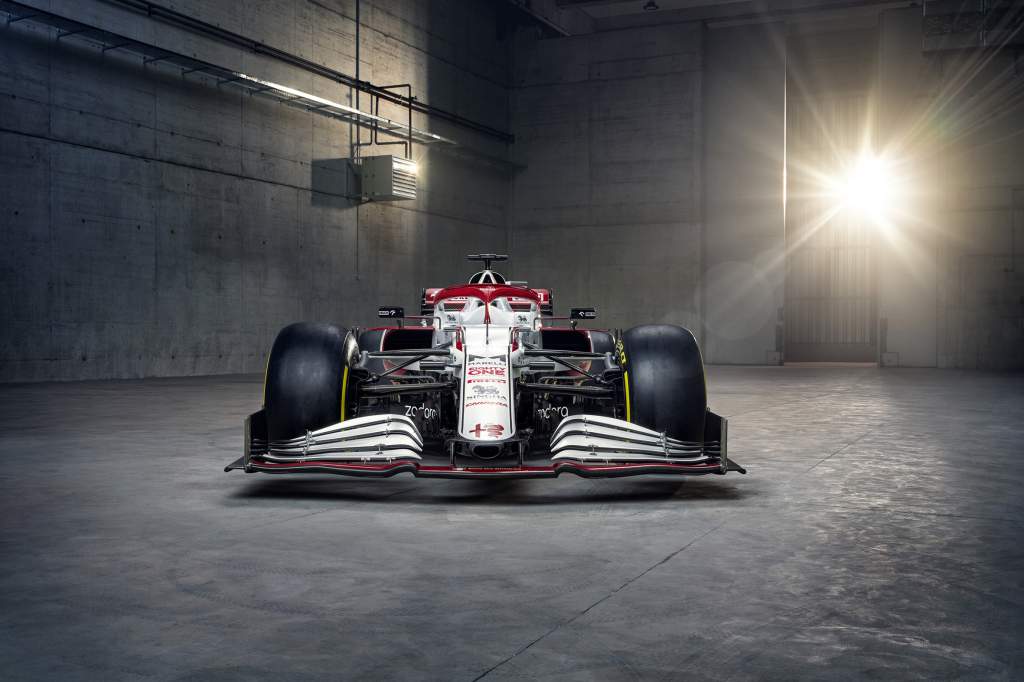Up Next

Alfa Romeo, or Sauber as it really still is, has always confused me. In its early days coming into Formula 1 from sportscars, it was an effective and well-focused team.
It had some great results, peaking with fourth place in the championship in 2001, then BMW took over and the results improved with that famous win for Robert Kubica in Montreal in 2008.
But after BMW pulled out, other than Charles Leclerc’s season there in 2018 and the odd surprise podium with Sergio Perez and Kamui Kobayashi, it seems to have lost direction and lacked a clear focus on what or where it wanted to be.
To me, Sauber is currently just rumbling along. Basically, you could look at last season and you never really hear much about what it’s up to.
It’s time for Sauber to start to stand up and be counted, show ambition, show frustration when it doesn’t achieve those aims and show euphoria when it does achieve them.
This season has to count for Sauber. With minimal changes to the regulations, it needs to show it has a handle on what’s going on otherwise it could easily find itself back in that major budget restriction scenario that it has been in all too often.
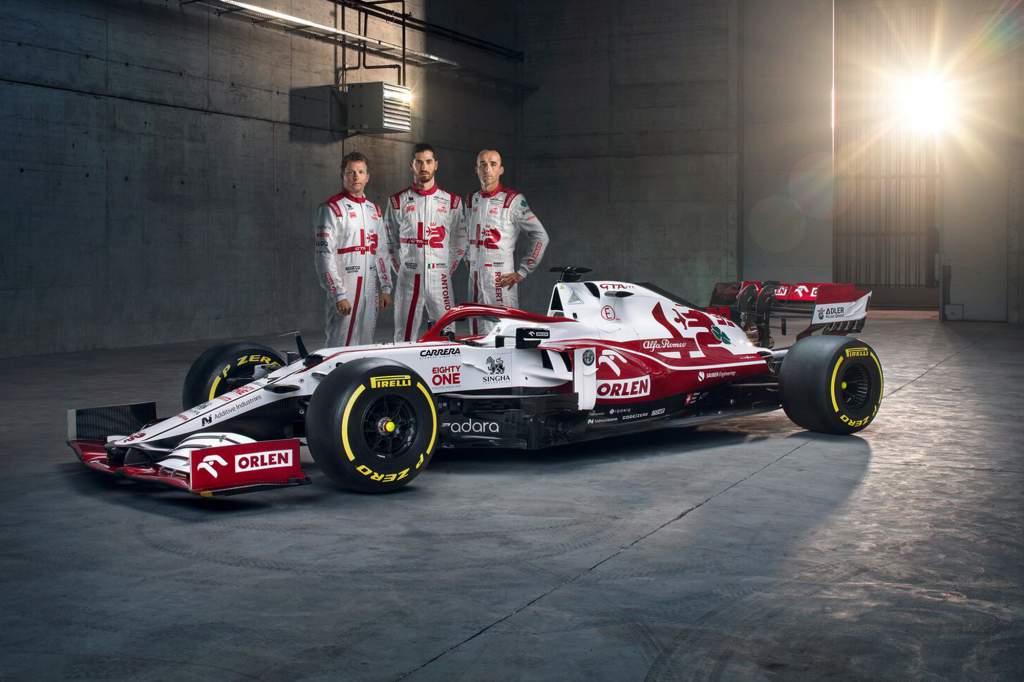
The new Alfa Romeo C41 carries over a lot of parts from the previous car. The team has spent its development tokens on a new nose and new front suspension, but a lot of other aerodynamic areas that don’t require a token spend have also been developed.
The front wing, bargeboards, front brake ducts and rear brake ducts have all been optimised to go in line with the regulation requirement of a new underfloor.
The new nose comes from the same family concept of last year but is more of a platypus style than the other narrow nose solutions.
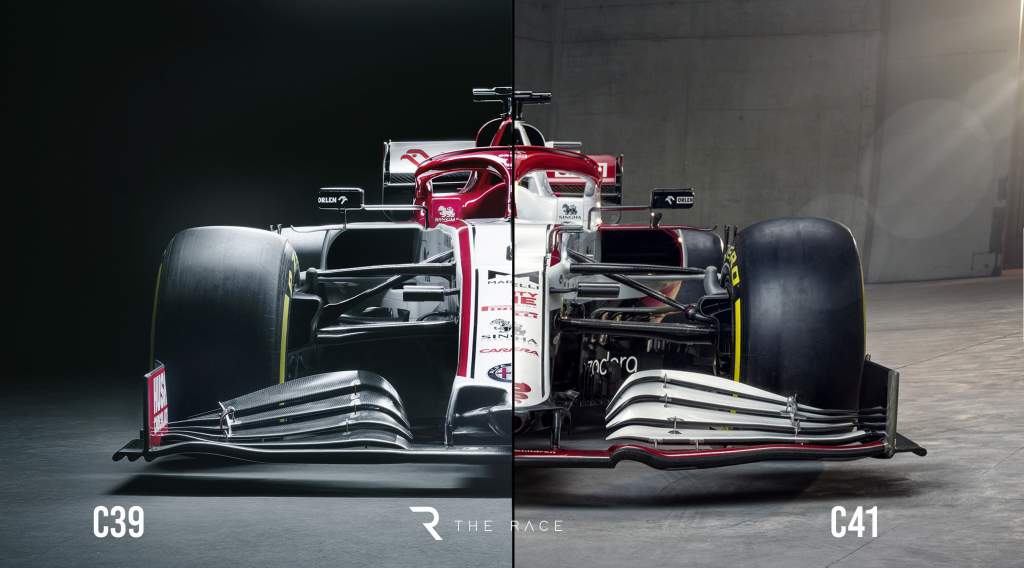
The now commonplace canopy underneath the nose starts in conjunction with the wing mounting pillars.
This is lower than the others we have seen in the past and a bit more complicated. More complicated is not a bad thing as long as you can make that complication work for you. If it doesn’t and you get unintended airflow separation beginning at the leading edge of the car, it can very easily affect everything downstream.
The front wing is heavily inboard-loaded with probably the least outboard loading we have seen on any car. This has been Alfa Romeo’s philosophy since these regulations came into play, but for 2021 it has gone a little more extreme.
The outboard end of the main plane is just about level with the bottom of the front wing endplate. As we see on many camera shots, sparks coming from this area of the wing mid-corner means that it is touching the ground. With the outboard end as low as this, it can definitely lead to sensitivity issues mid-corner.
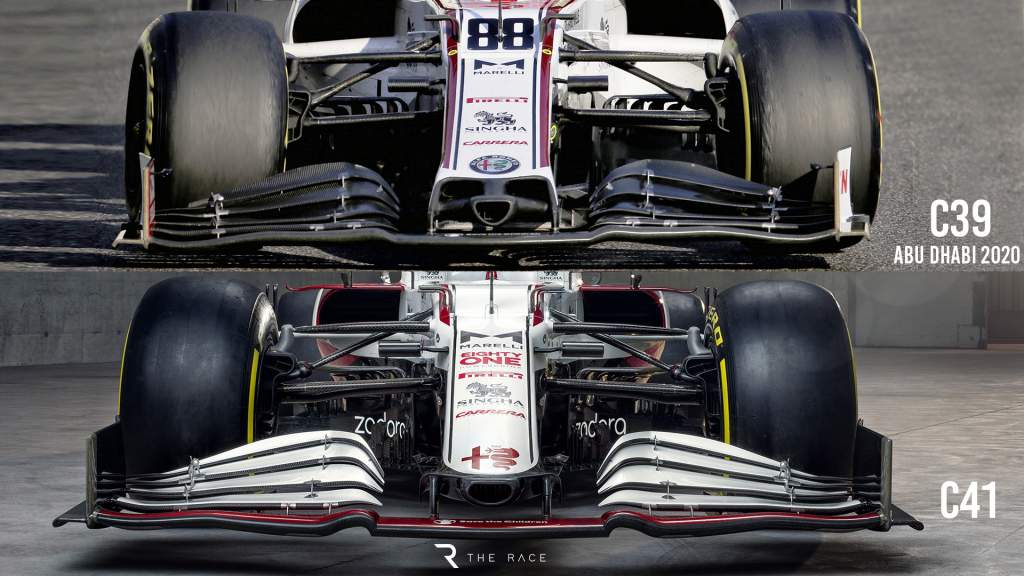
The raised tunnel where the mainplane joins the FIA-defined neutral central front wing section is to generate a vortex to act as an invisible skirt separating these two sections and reducing any crossflow, which again can play havoc further downstream. It’s great if it works, not so good if it is inconsistent.
Visually, the front suspension geometry looks very similar to its predecessor. The team claims it has changed this, so it’s either inboard parts or the mechanism it has to jack weight across the front axle relative to steering lock.
This is now becoming the norm and the objective is to reduce the load on the outside front tyre with increased steering lock. This is to reduce the inherent understeer these cars have in slow corners while maintaining the stability in high speed-corners, which requires less steering lock, the negative is that it can contaminate the drivers’ feel of the steering loads, which is something Kimi Raikkonen really doesn’t like.
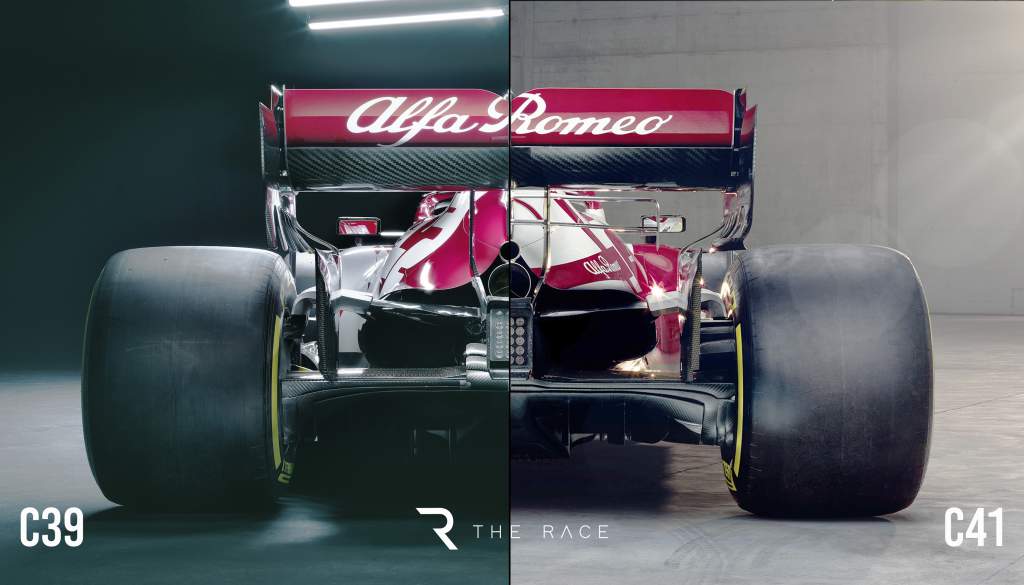
The rear of the car features a double T-wing. Every team now looks like it is throwing the kitchen sink at the car to try to replace the downforce loss from the regulation changes, namely the narrower underfloor, diffuser strake height and rear brake duct winglet restrictions. These Pirelli tyres respond exponentially to load so if the load isn’t there to get the tyres working, you suffer a double whammy.
The diffuser uses the now-common maximum height and width with the slot gaps along the top and outboard sides. Every effort is put into trying to get the low-pressure area behind the rear tyre to influence the performance of the diffuser.
This will be more difficult for 2021 because of the reduced width rear brake duct – or, in reality, reduced-width turning vanes mounted on the rear brake ducts.
The main exhaust outlet is defined in the regulations and Ferrari, which supplies this for Alfa, has gone for a single wastegate pipe mounted above this exhaust outlet.
Some teams have one, some have two but in effect they are too far away from the rear wing to have much, if any, effect on its performance.
Also, because of its size the gasflow speed out of the exhaust is very slow and the wastegate will not be operating when you want improved rear downforce coming off the corner.
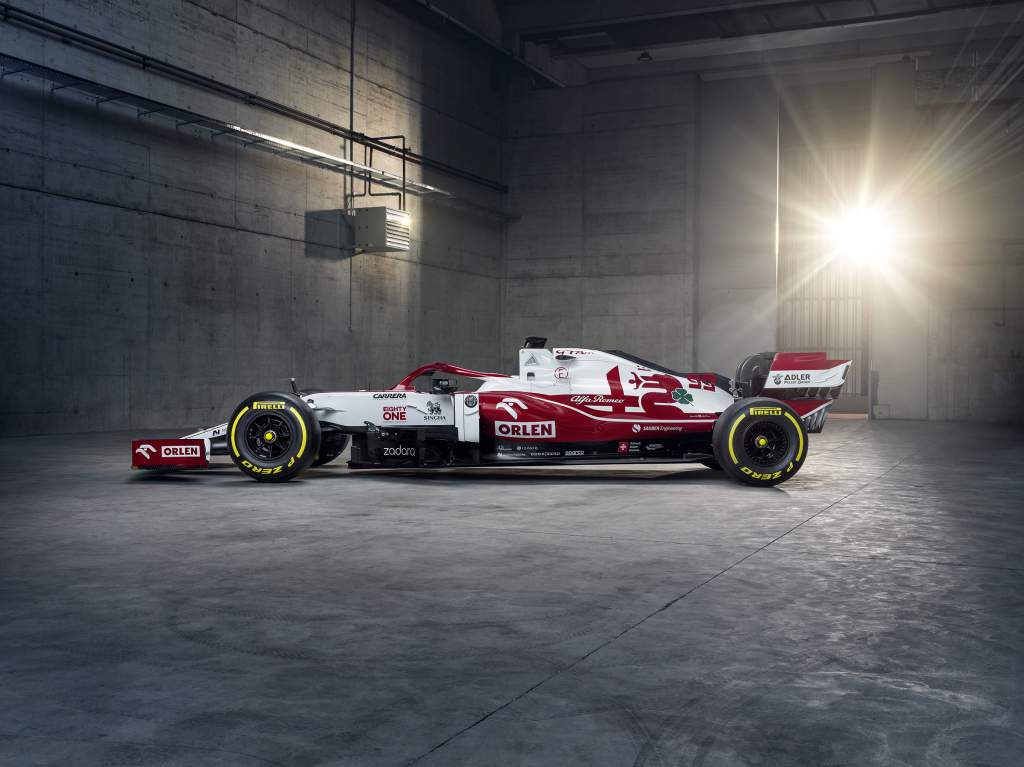
Alfa Romeo also says there are new bargeboards on the car, but what I am seeing looks very similar to its previous version. With these very complicated components, the devil is in the detail and optimising each and every one of the twists and turns that is on these surfaces can give big returns.
Also, they are bolt-on components so perhaps Alfa Romeo is keeping its powder dry until it goes testing. The version on the launch car is fairly basic compared to some, so there will be changes to come.
Alfa Romeo has always been a fan of the triangular rollover bar with the extra cooling ducts that little bit further rearward. I’m not so sure about this. The prime objective in this area is to adequately feed the compressor inlet and whatever components you chose to cool with airflow through these extra ducts.
However, the flow into the turbo inlet isn’t consistent, it varies with turbo speed and power request and with that the airflow spillage going around the sides of the leading edge of the inlet varies.
If this isn’t controlled and minimised using these extra inlet cooling ducts, this spillage can very easily influence the performance of the rear wing.
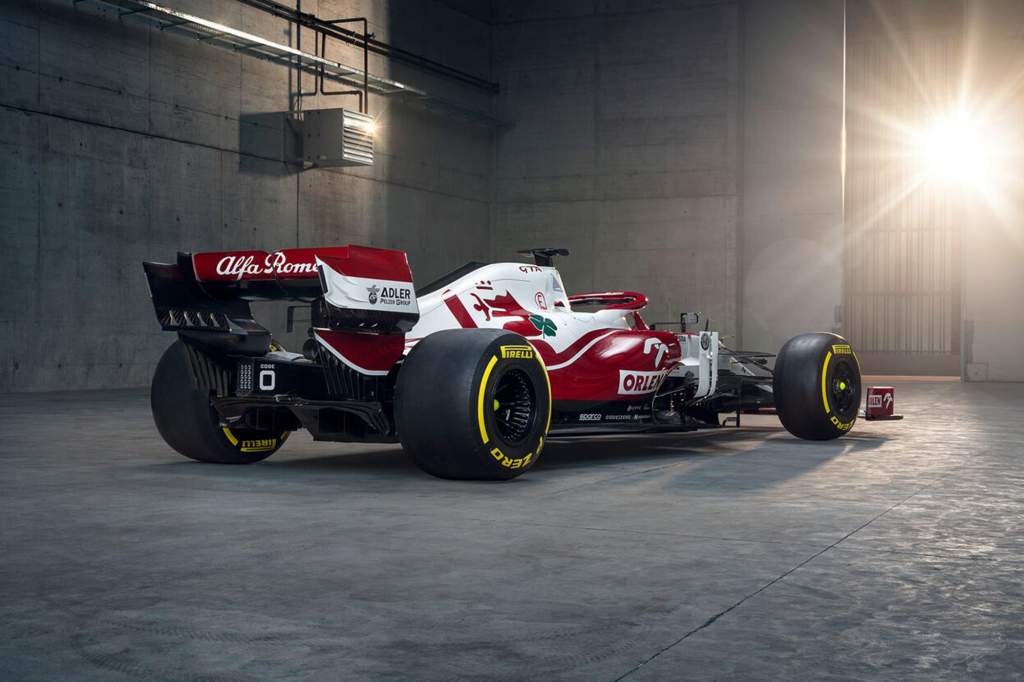
It’s good to see there are some changes from Alfa Romeo, and there will be more to come. But I’m not convinced it’s enough to transform the fortunes of the team, or make it the genuine midfielder it should be.
However, on top of the chassis developments, a lot will depend on the step Ferrari has made with the power unit.
All at Alfa will be keeping their fingers crossed it’s big enough to help them achieve the goal of continually moving forward.


